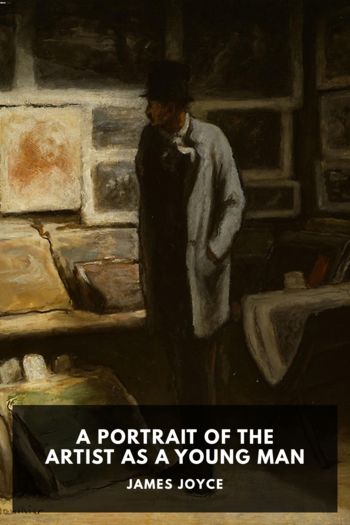Mrs. Keppel and Her Daughter, Diana Souhami [the ebook reader TXT] 📗

- Author: Diana Souhami
Book online «Mrs. Keppel and Her Daughter, Diana Souhami [the ebook reader TXT] 📗». Author Diana Souhami
on condition that the husband does not enter his wife’s bedroom and on the payment of a sum of money which might permit him to mount his music which the opera houses do not want.
The Princess bought a fifteenth-century Lombardesque palace in Venice, renamed it the Palazzo Polignac and spent consecutive summers there until, as she put it, ‘the hideous Hotel Excelsior was built on the Lido … and before the invasion of fashionable visitors from every Continent during the bathing season.’
Before such spoiling times hers was la dolce vita. Her neighbours were ‘the lovely Lady Helen Vincent whose Palazzo Giustimani was perhaps the most beautiful in all Venice’; the Countess de la Baume whose Casa Dario was, ‘a marvel of comfort and good taste, filled with the finest pictures and the most precious books and musical instruments’; the Marchesa Casati at the Venier de Leoni, who at one of her own fancy-dress balls appeared wearing a costume designed by Bakst, a drugged tiger at her feet.
The Princess revered culture and was a formidable patron of the arts. Cosmopolitan in a way Violet admired, if she liked what she saw, heard or read, she bought it. Her vast Paris house at the corner of the avenue Henri-Martin and the rue Cortambert was a temple to art. Reconstructed in eighteenth-century French classical style, she fitted it with public galleries and concert rooms and filled it with priceless things. She had a Renaissance tapestry in her bedroom. She liked the paintings of Goya, Edouard Manet, Claude Monet, Sisley, Renoir, Boudin, Degas, so she bought them. Her grand salon resembled the galerie des glaces at Versailles. In it, she held concerts and exhibitions of paintings including her own. She commissioned the Spanish artist José Maria Sert to paint the pilaster capitals with ‘sapphic scenes’ of naked ladies cavorting with bunches of grapes and each other. In the oak-panelled music room she installed a full-sized organ on which she played Bach. In the library, which led to a raised garden, she commissioned a ceramic tabernacle from the sculptor, Jean Carriés, to house a Wagner manuscript she valued. From the engraver, Paul Helleu, she commissioned an album of etchings of her lovers, then bought and destroyed the plates so no copies could be made.
Music was her particular love. From her earliest years as a child at her mother’s house at 27 avenue Kléber near the Bois de Boulogne she
constantly heard all the great works of Beethoven, Mozart or Schubert, including the last Quartets of Beethoven, Nos 10 to 17, which were then considered almost incomprehensible … I remember that on my fourteenth birthday although I was offered a little watch from Boucheron’s or a fan painted by Chaplin the famous portrait painter, I chose as a present, or ‘birthday surprise’ a performance of my favourite work by Beethoven – the Fourteenth Quartet.
The quartet was played on her mother’s collection of Stradivarius stringed instruments.
Denys’s friendship with the Princess evolved from their shared interest in avant-garde music:
Together they would attend concerts and rehearsals, the score under their arm; together they would curtail elaborately prepared dinners so afraid were they of missing any part of the programme.
Each year the Princess went to Bayreuth. She was a devotee of Richard Wagner. Ravel dedicated piano pieces to her. Stravinsky, Debussy, Nadia Boulanger, Erik Satie were commissioned by her. She knew Diaghilev, Nijinsky, Pavlova, Karsavina, Ida Rubenstein. Gabriel Fauré, when her guest at the Palazzo Polignac, composed Melodies de Venise on her portable yacht piano on her boat on her lagoon. Janet Flanner heard the first performance of Oedipus Rex by Stravinsky at the avenue Henri-Martin: ‘The Latin was sung, with Italian pronunciation, to the French audience by Russians.’
At the Princess’s salons Violet socialized with ‘names to conjure with’: Jean Cocteau, Anna de Noailles, Colette, Jean Giradoux, Misia Sert, Paul Valèry, Francis Poulenc, Marcel Proust. Proust wove dialogue and impressions of her salons into A La Recherche du Temps Perdu. Winnaretta corresponded with him but said it was impossible to endure his company for long because he took offence all the time, assuming slights where none was intended. She said his life was governed by unrequited romantic attachments to men and that she found this wearisome.
She lived as she pleased, arranged life carefully and, like Edward VII, was too grand for scandal to stick. When she took Violet as her lover in 1923 her ‘inner circle’ was comprised of gay or lesbian artists. Though she had no contact with the Left Bank – Gertrude Stein at the rue de Fleurus, Natalie Barney and her Temple of Love, Sylvia Beach and Shakespeare & Company – she too was a lesbian who lived for art in the city where modernism was born, where the climate was accepting and the spirit free.
Oscar Wilde and Lord Alfred Douglas had attended the Polignac salons. Prior to Violet the Princess’s lovers included her husband’s niece, Armande de Polignac (married to the Comte de Chabanne la Palice, she used her maiden name and never mentioned him), the painter, Romaine Brooks and Olga de Meyer. Bertie was rumoured to be Olga’s father. Her middle name was Alberta, after him. Her mother, the Duchess di Caracciolo, left her husband at the altar steps to live with her lover Prince Josef Poniatowski in a villa near Dieppe. Bertie was a frequent visitor. In 1901 Olga married his friend Baron Adolf de Meyer, the fashion and society photographer. Olga filled her bedroom with paintings of nude women and was Winnaretta’s lover from 1909 until the start of the First World War. She and her husband were opium addicts. Violet called them Péderaste et Medisante ‘because he looked so queer





Comments (0)